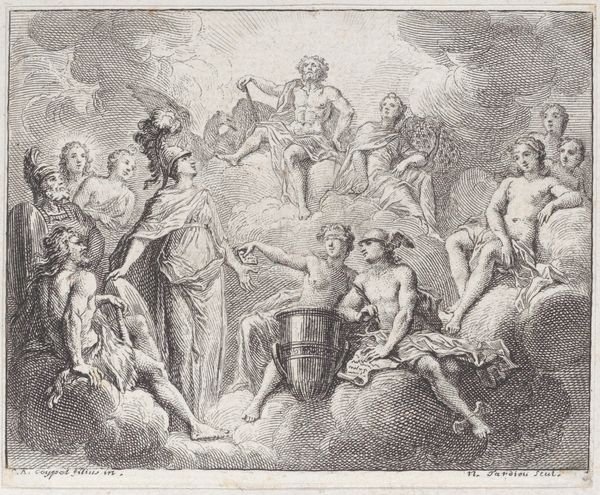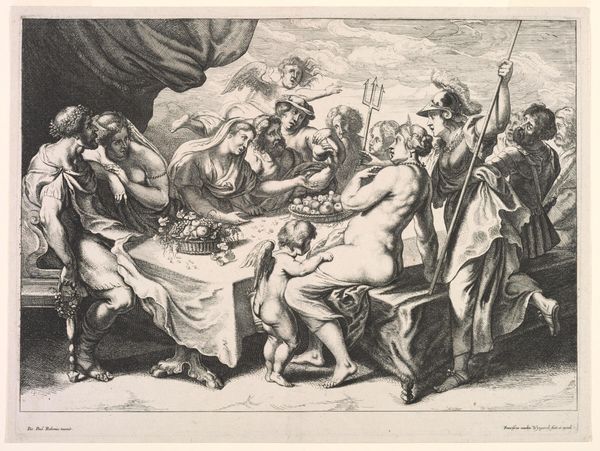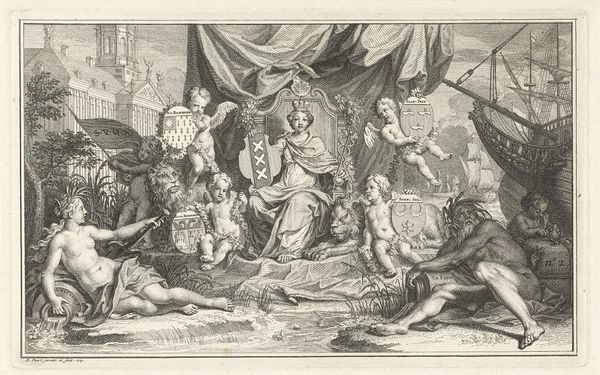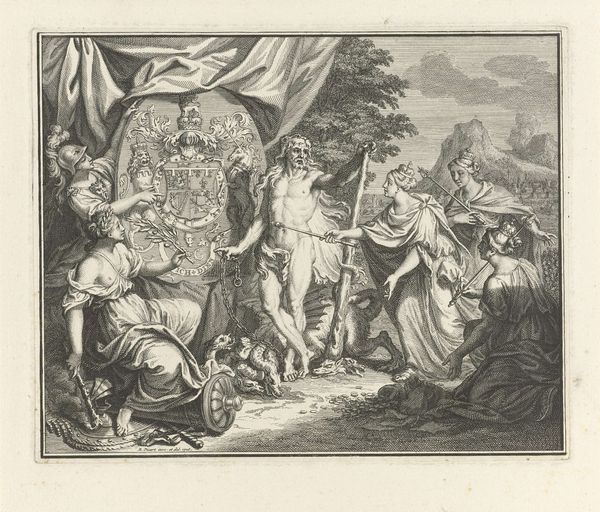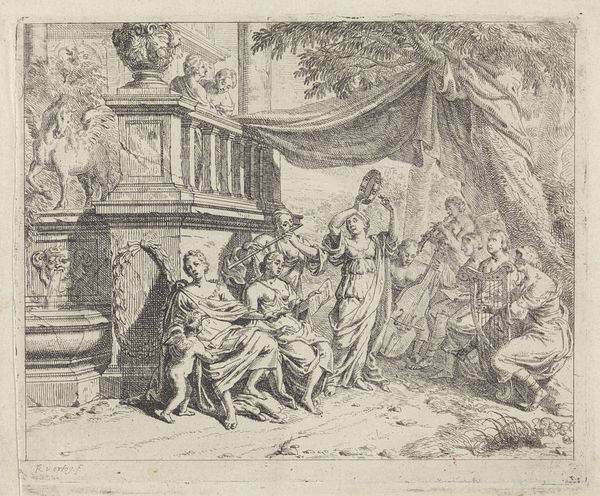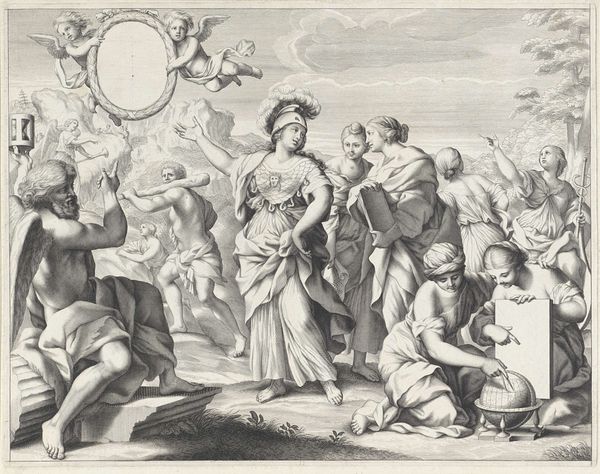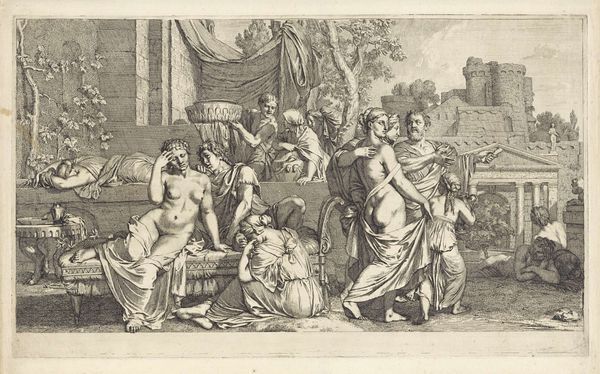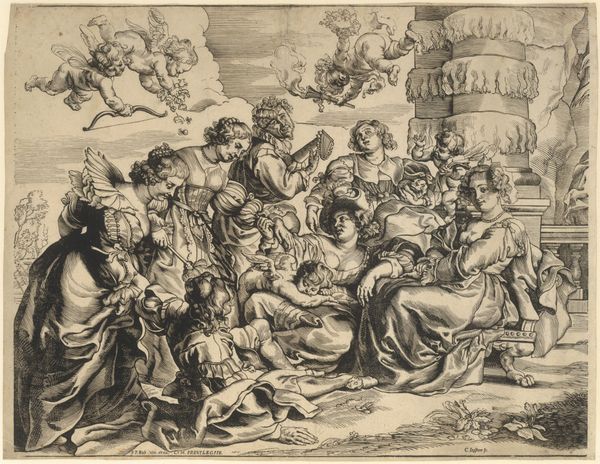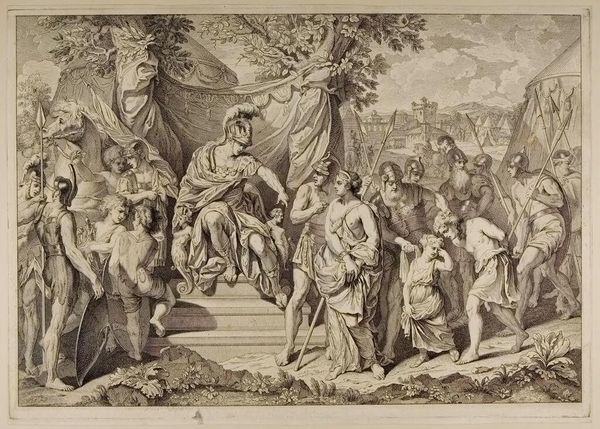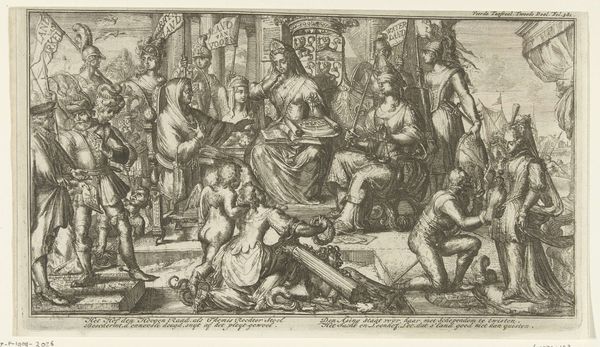
Apollo, Minerva, Rechtvaardigheid en Hercules rond een wapenschild 1716 - 1761
0:00
0:00
pietertanje
Rijksmuseum
engraving
#
allegory
#
baroque
#
figuration
#
form
#
line
#
history-painting
#
engraving
Dimensions: height 132 mm, width 172 mm
Copyright: Rijks Museum: Open Domain
Editor: Pieter Tanjé’s engraving, "Apollo, Minerva, Rechtvaardigheid en Hercules rond een wapenschild," created sometime between 1716 and 1761, strikes me as incredibly dense. The composition is packed with figures and symbolic objects. What are we looking at here, from a historical perspective? Curator: This engraving is a prime example of Baroque allegory, very common in the 18th century. Consider its public role. These weren’t just decorative; they communicated very specific messages about power, justice, and prosperity. Notice the central shield, likely representing a specific region or family. How do the surrounding figures—Apollo, Minerva, Justice, and Hercules— contribute to that message? Editor: I see… So, Apollo and Minerva represent arts and wisdom, while Hercules stands for strength. Justice completes the scene with scales and a sword. Is it about glorifying those who embodied these virtues in their reign? Curator: Precisely. Think about the context of the artwork being commissioned and viewed in its time. Prints like this were often made for distribution to members of court. This kind of imagery actively constructs narratives around power. This one specifically projects an image of virtuous, divinely sanctioned leadership. Consider how these images were received; how did this impact social dynamics and reinforce the legitimacy of authority? Editor: That makes sense. It's more than just decoration; it's political communication. Are those putti part of that political message too? Curator: Indeed. Even cherubic figures have a role! They create a sense of celebratory atmosphere. Now that we recognize its allegorical meaning, does your initial impression of density change? Does it reveal an intentional composition? Editor: It does! I see now how carefully crafted it is, how it’s less chaotic than I initially thought and deliberately constructing a specific narrative about leadership and social order. Thanks! Curator: It is very important to understand how art functions within and reflects society, using history to broaden our contemporary perspective.
Comments
No comments
Be the first to comment and join the conversation on the ultimate creative platform.
